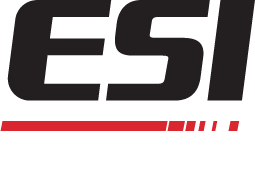EB VS UV Size
EB VS UV: Size
EB and UV curing equipment are both much more compact than your conventional drying ovens, making EB and UV equipment size a tangible benefit when looking to decrease your operational costs. Not only that, but the solvent free compositions also require less storage space than solventbased coatings, making your footprint compact, reducing the amount of commercial real estate required and ultimately, reducing your operational costs.
EB and UV Equipment Components
Typical components of a UV curing system are lamps, power supply, air handling equipment and control panels. The lamp, which is relatively compact, includes the bulb, reflectors, shielding, and heat management components.
The size of modern electron beam equipment has gone through significant reductions. Original industrial EB equipment was quite large, but today’s low voltage EB equipment can be less than one-half the size of its predecessor. Despite its smaller size, it’s not practical to use this equipment for interstation curing.
Equipment Implementation in Printing Process
Because of the compact size of the UV curing lamp, it can easily be placed in interstation installation between printing decks, allowing curing of each ink color. To create the graphic image, multiple colors are combined in a “dry trapping” process. When the printed side of the web is turned up against an idler roll between stations, interstation curing is beneficial for this application.
While the size of Electron Beam equipment doesn’t lend itself well to interstation curing, the smaller footprint is still highly appealing and is ideal for endofpress installations. A common example of this is at the end of a web offset press used for the production of folding cartons. Another application example is offset printing which uses paste inks that are designed to be “wet trapped” without any interstation drying a perfect application for EB curing at the end of the press with a single ebeam unit.
Benefits of Electron Beam Equipment Size
Since the development of web offset presses incorporating more variable repeat length technology, the size of modern lowvoltage EB equipment aligns nicely with the new industry need. Combined with the recent new technology of wet trap flexographic inks, the need for interstation curing can be eliminated and replaced with a single electron beam curing station at the end of the press. An added benefit to this is the extremely low dot gain that provides superior printing results.
Conclusion
While a single UV lamp may bring a smaller initial acquisition cost, a single EB curing unit can facilitate an entire, wide, highspeed line. When you’re considering total capital and operating costs, a single EB unit is likely to be comparable or lower in cost than its multilamp UV counterpart. If you want to learn more about the benefits of an EB curing unit for your business, contact us today.

